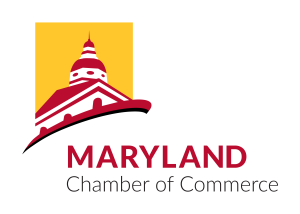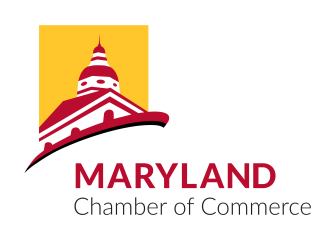
Ask anyone why Maryland had to find a way to close a three billion dollar budget gap just three years after clocking a record surplus, and you’d think you’re asking the simplest question in politics.
But step into Maryland’s political arena, and you’ll quickly discover this seemingly straightforward question unleashes a barrage of finger-pointing that would make the Spider-Man meme proud.
In a statement to WAMU, Governor Wes Moore’s office points to his predecessor, arguing that Larry Hogan failed to generate sufficient revenue during his eight years in office, leaving Maryland’s coffers chronically underfunded. Hogan fires a different direction, blaming the Democratic-controlled legislature for what he describes as years of reckless spending that ignored fiscal reality. Business advocates insist that Maryland’s high taxes and burdensome regulations have driven businesses away, shrinking the tax base. Progressive analysts counter that corporate tax loopholes have allowed businesses to dodge their fair share, starving public services of needed resources.
Maryland’s budget crisis isn’t the result of one bad decision or one incompetent leader—it’s the culmination of structural challenges, competing priorities, and years of political choices that have finally collided with a challenging economic reality.
Slow growth and pandemic headwinds
Like many states, Maryland received billions in aid from the federal government under the American Rescue Plan, propping up revenue during the pandemic and contributing to a significant surplus when Governor Hogan left office in 2023.
But behind the surplus were years of sluggish growth.
“Our revenue structure has been fragile, more fragile than we want it to be,” Maryland state comptroller Brooke Lierman said recently on The Politics Hour with Kojo Nnamdi.
According to a report from Lierman’s office released in January, the state’s gross domestic product (GDP) grew just 1.6% after you adjust for inflation between 2016 and 2023. Compare that growth to 11.6% in Virginia and 13.9% nationwide.
One contributor to slower growth was Maryland’s aging population; the state has a larger share of older residents than many other states. According to the state’s Department of Aging, at the same time, birthrates are slowing. By 2030, over a quarter of the population is projected to be over the age of 60. This ultimately means fewer people in the workforce, reducing the state’s taxable income pool.
The comptroller’s office also cited an overall population decrease, resulting from people moving out of the state.
And while revenue was stagnant and COVID funding was drying up, costs exploded. Medicaid enrollments skyrocketed during the pandemic, with as many as 1.8 million people enrolled in March of 2023, up from 1.4 million when the pandemic began.
Other expenses ballooned as well. Between 2021 and now, enrollment tripled in the state’s childcare scholarship program for low-income residents. The state’s share of scholarship costs increased from 0.2% of general fund expenditures to 1.6% during this period, from $44 million to $422 million, not adjusted for inflation, according to the Maryland Center on Economic Policy.
“It’s vitally important for Maryland workers,” according Benjamin Orr, president and founder of the Maryland Center on Economic Policy, about the childcare scholarship program. “There has been a significant push, not just in the Moore administration but before the Moore Administration and I think across the country to focus on child care.”
These and other factors led to the multibillion dollar deficit the legislature had to scramble to balance in January.
A blueprint for controversy
While the governor and lawmakers were able to balance the 2026 budget, it required $1.6 billion in new taxes and fees as well as $2 billion in cuts. Those cuts included halting and delaying programs, instituting hiring freezes, and state employee buyouts.
One costly commitment is the implementation of the state’s ambitious education reform plan known as the Blueprint for Maryland’s Future. Years in the making, this sweeping legislation is a $30 billion, 10-year project that aims to transform the state’s public education into a “world-class system.” The Blueprint was birthed from recommendations out of a bipartisan, multi-year study of the state’s education system by the Kirwan Commission. It aims to expand preschool education, raise teacher pay to a minimum of $60,000 annually, add extra support for English language learners, and focus funding on some of the most poverty-stricken schools in the state.
Local jurisdictions have struggled with Blueprint’s funding requirements since the bill became law in 2021, including Montgomery and Prince George’s counties. At the state level, funding has primarily been through a special bucket of money outside the general fund, topped up in part by casino revenue. But the Department of State Legislative Services estimates that by fiscal year 2028, that special fund will run out and the state will be scrambling to fund billions in additional education costs.
“This has to be the most reckless piece of legislation I think ever passed,” critiqued Christopher Summers, President of the Maryland Public Policy Institute, in an interview with WAMU in mid-July.
Summers echoed sentiments from former Governor Larry Hogan, who initially vetoed the education spending bill before being overridden by the Democratic-controlled General Assembly. He said the bill would require a massive tax increase and that the state just couldn’t afford it.
“I think that it’s important to not lose sight of why the state adopted the blueprint in the first place,” Orr told WAMU, defending the Blueprint. “Our schools, particularly those in low income communities, were significantly underfunded at the time, and it was affecting outcomes for students, and in particular, for example, our research showed that more than half of black students in the state attended school in a significantly underfunded district.”
He added, however, that the bill was passed without a clear idea of how to fully fund it.
A gloomy economic forecast
Another challenge in Maryland’s fiscal outlook is the state’s deep reliance on the federal government. It’s a relationship that until recently had helped the state to weather recessions. But as one of the most federally dependent states in the country, when Washington tides rise or fall, Maryland’s fortunes do as well.
The Maryland Department of Labor told WAMU that since January 2025, Maryland’s federal workforce has decreased by 12,700. The Bureau of Labor Statistics showed the state lost 3,500 federal jobs in June, a record single-month loss. And in Maryland, Montgomery and Prince George’s counties have the highest concentration of civilian federal workers. When those taxpayers lose their jobs, tax revenue evaporates and unemployment claims surge.
The impact isn’t limited to those employed by the federal government. Many Maryland companies depend on federal contracts, state and higher education programs get federal grants, and many local businesses rely on business from people employed by the federal government.
This is all before federal workers who took voluntary buyouts formally separate from their jobs and paychecks stop at the end of September. And the Trump administration has given no sign federal cuts will slow.
Some Maryland legislators, echoing economists’ warnings, fear the Trump cuts could throw Maryland into a recession, which would be catastrophic for state revenues, especially if Blueprint spending spikes in fiscal year 2028.
No agreement on solutions
When asked about the budget, Governor Wes Moore’s office said he hopes to diversify Maryland’s economy to rely less on federal jobs. Moore’s office cites a survey ranking Maryland’s economy 9th in the country, up from 19th in 2023. His office also touts turning the deficit around in the 2026 budget, and notes the state boasts one of the country’s lowest unemployment rates (12th in the nation).
But the recent hiring freeze and state employee buyouts tell a less optimistic story, as does the massive deficit lawmakers and the governor scrambled to cover in January.
Some would like to see more done to improve the state’s economic climate for businesses.
Grason Wiggins, Vice President of Government Affairs at the Maryland Chamber of Commerce, told WAMU in an interview in mid-July he thought the state needed to cut regulations and taxes to make Maryland more attractive for business, arguing that a larger economic pie will generate more revenue long-term.
“We are in an area of the country that is very easy to transition across state lines,” Wiggins continued. “When businesses look at this area, we have to compete with Virginia and Pennsylvania, and our tax climate just is not competitive.”
The organization points to Maryland’s ranking as 45th in business tax climate as evidence the state needs to become more competitive.
On the flip side, Orr from the Maryland Center on Economic Policy says the state needs to raise taxes on the wealthy and close corporate loopholes.
“We get something for our taxes. When we pay our taxes, in exchange, we get quality education, we get access to healthcare. I’d much rather be sick in Maryland than in most other states,” Orr explains. (Lawmakers and the governor did create two new tax brackets in order to boost taxes on wealthier residents.)
As far as how to overcome a possible recession amid the ongoing loss of federal jobs and funding, that is a longer-term problem state leaders will have to address in future budget battles.



